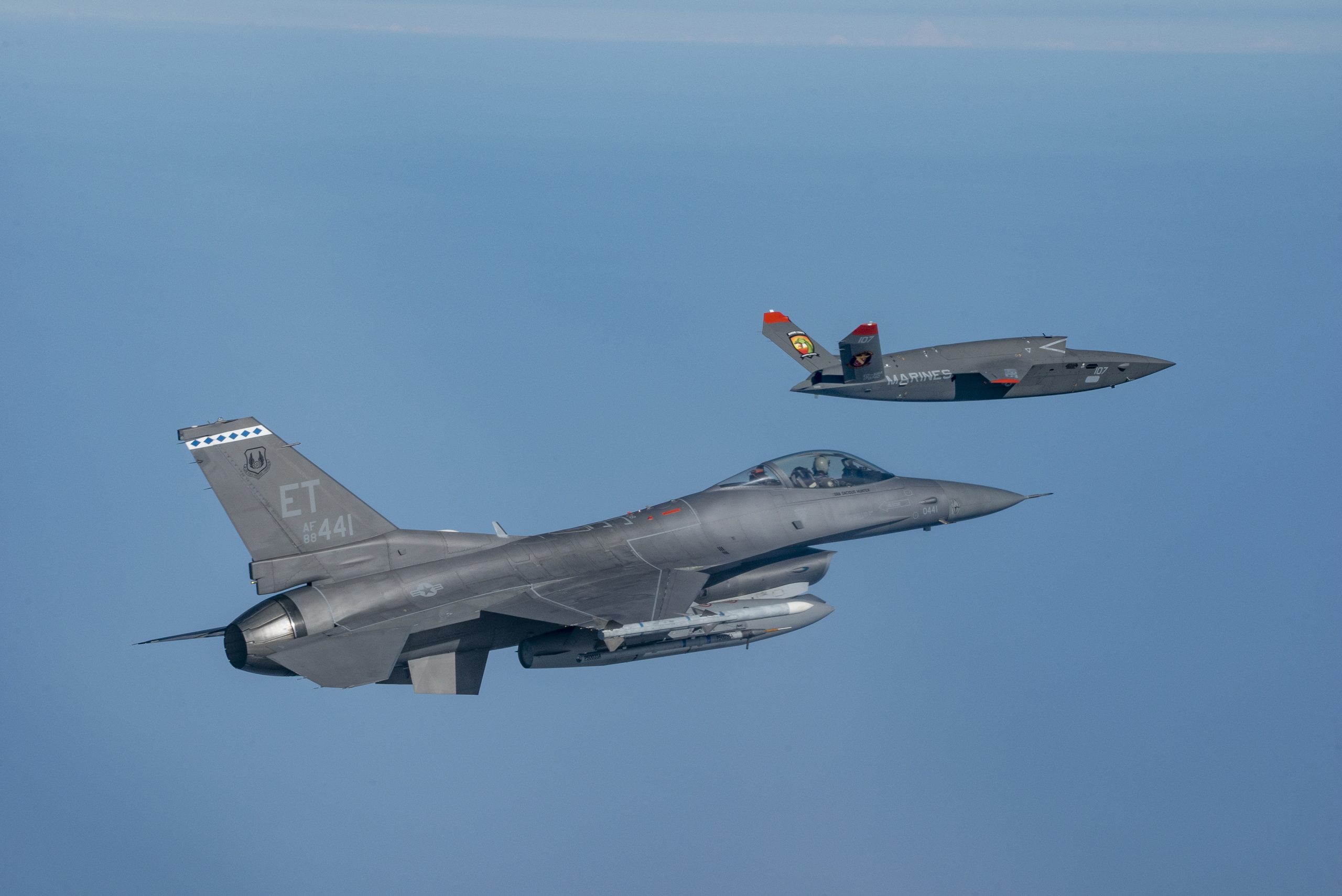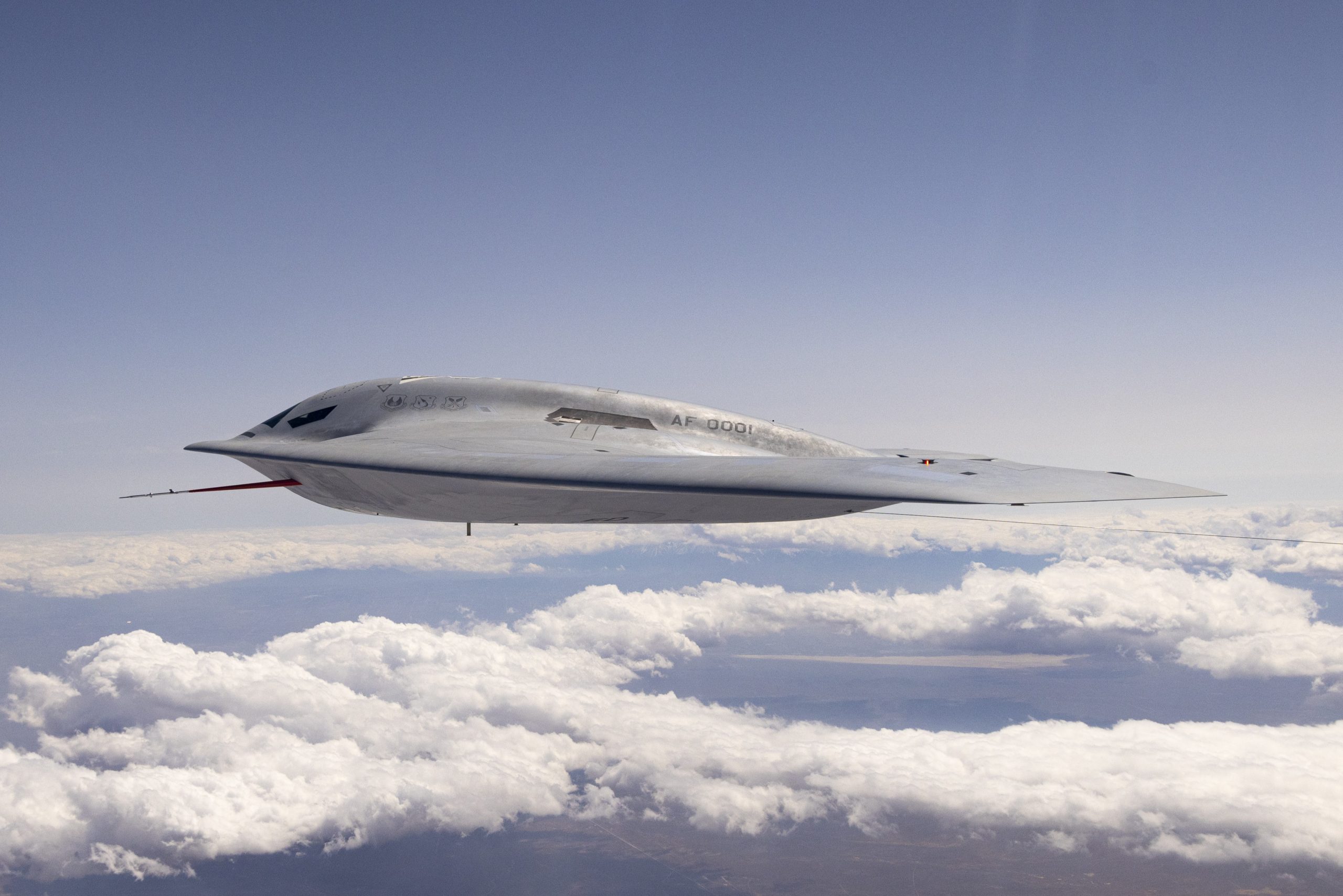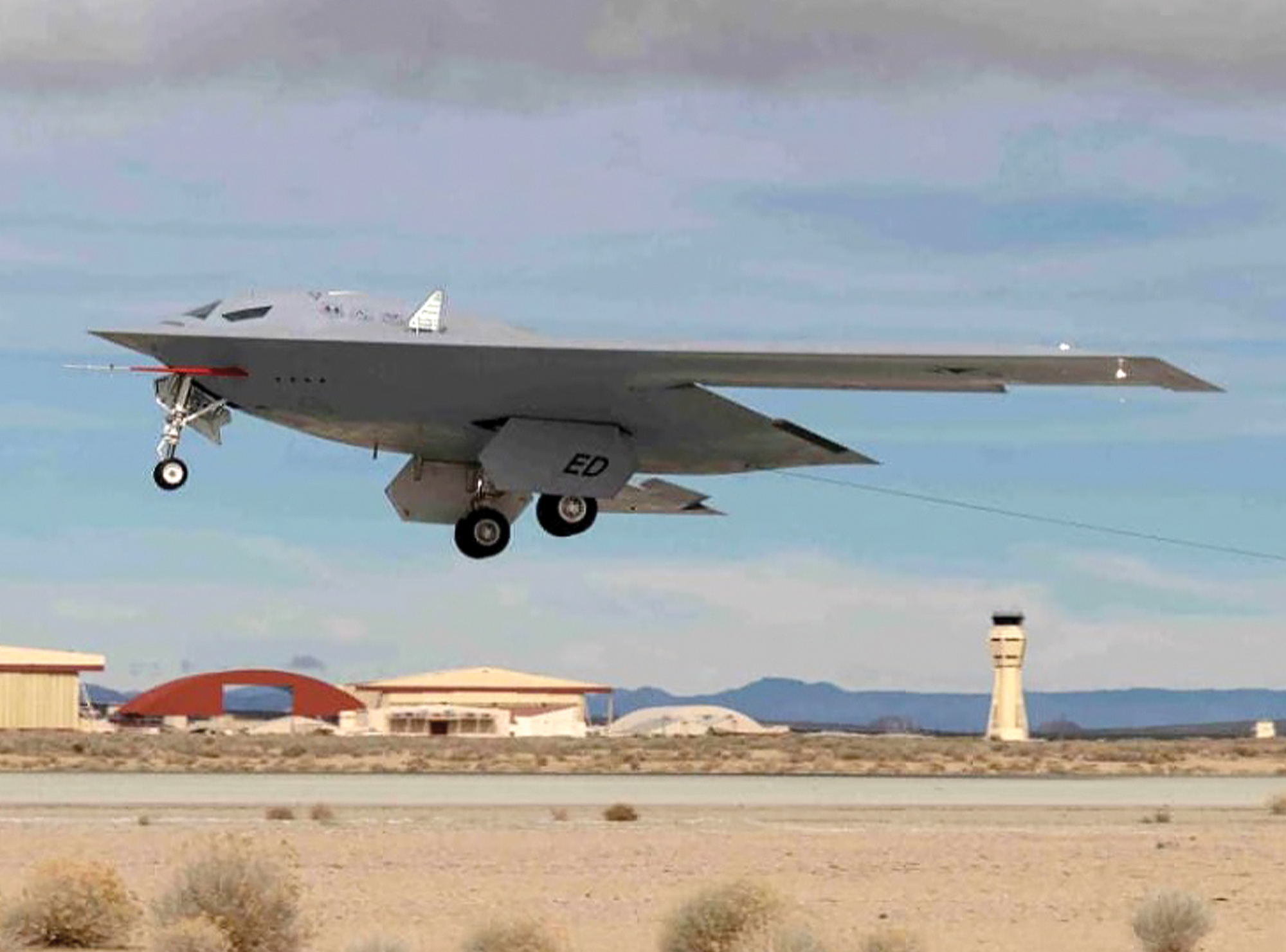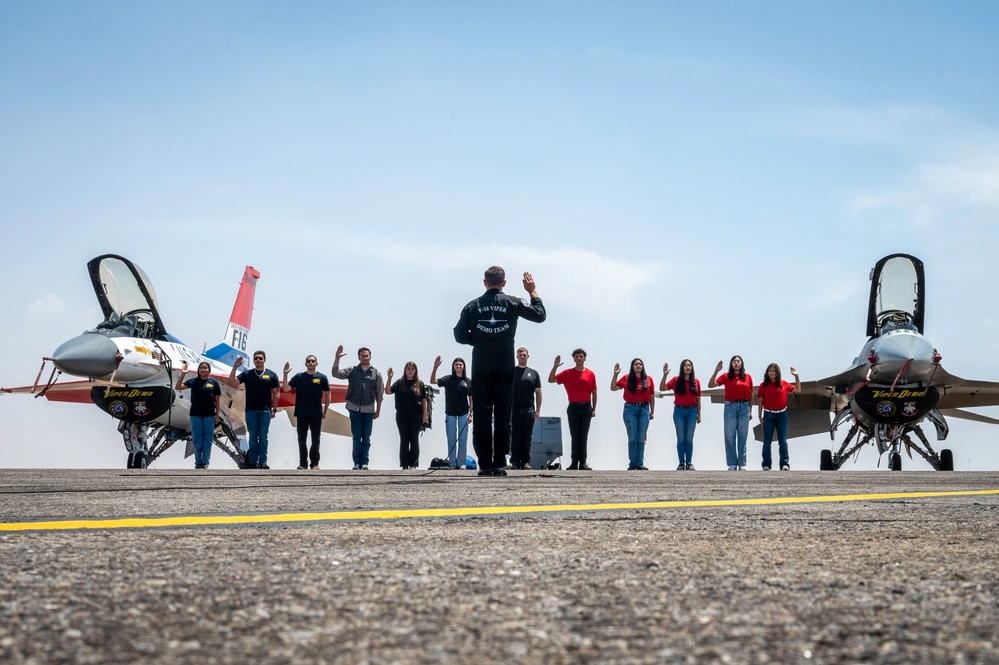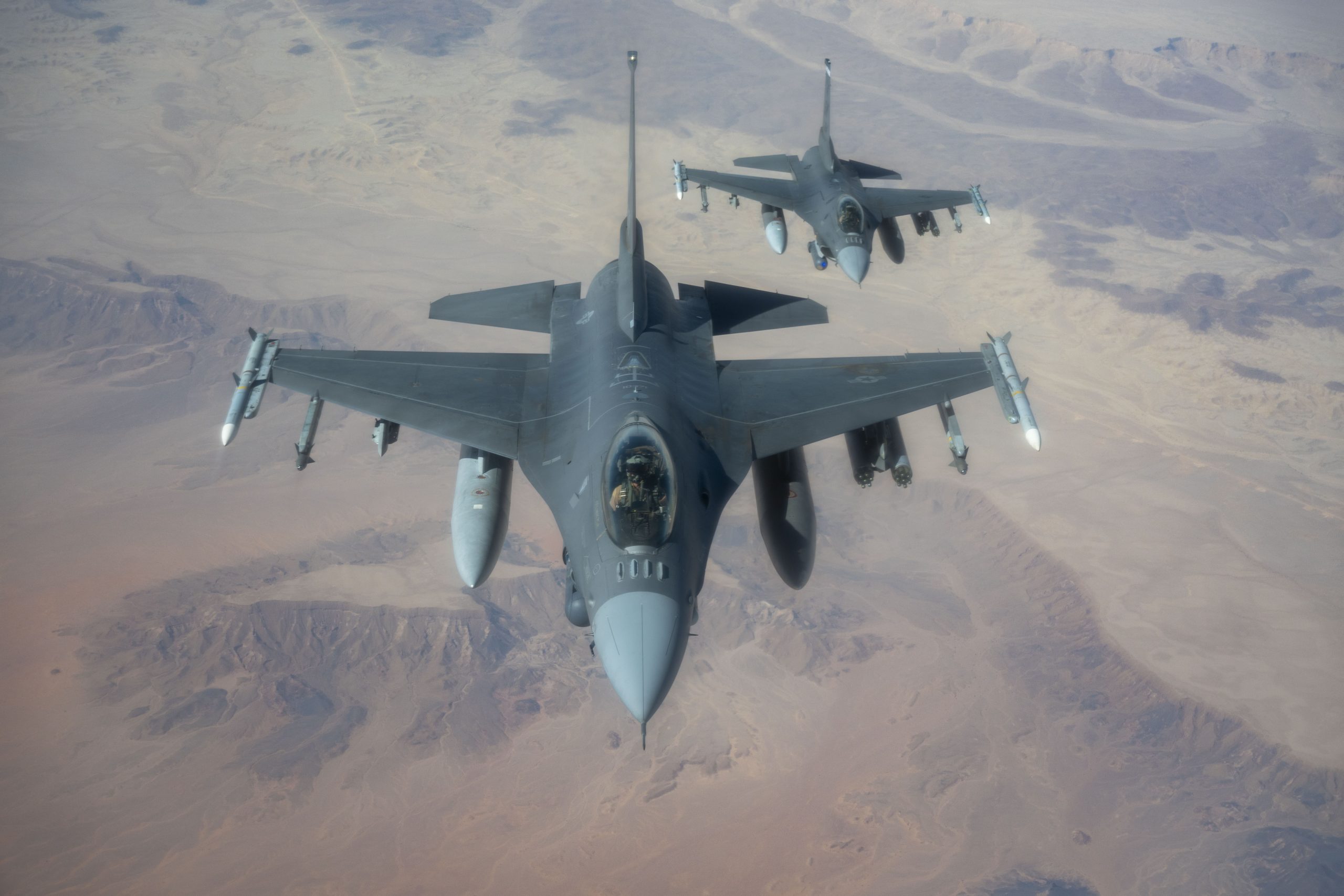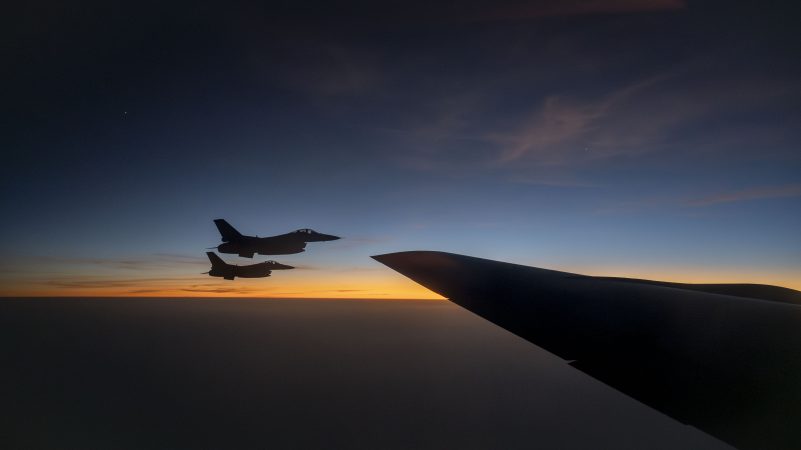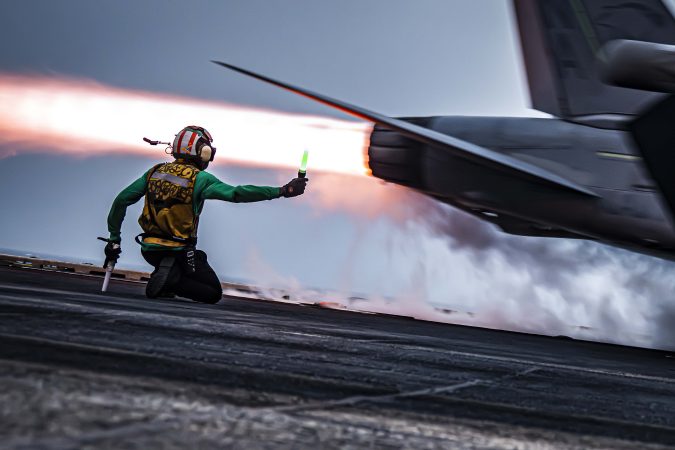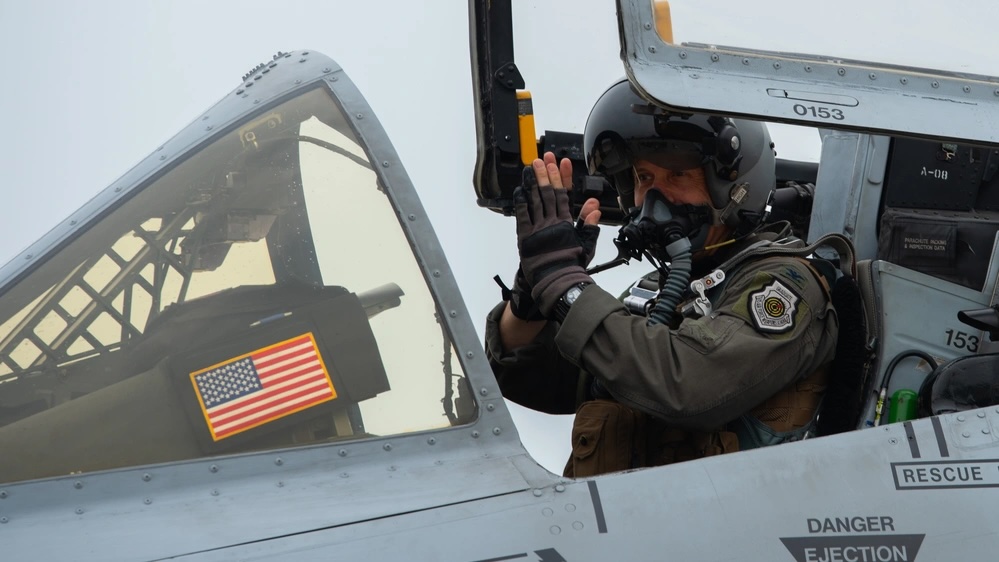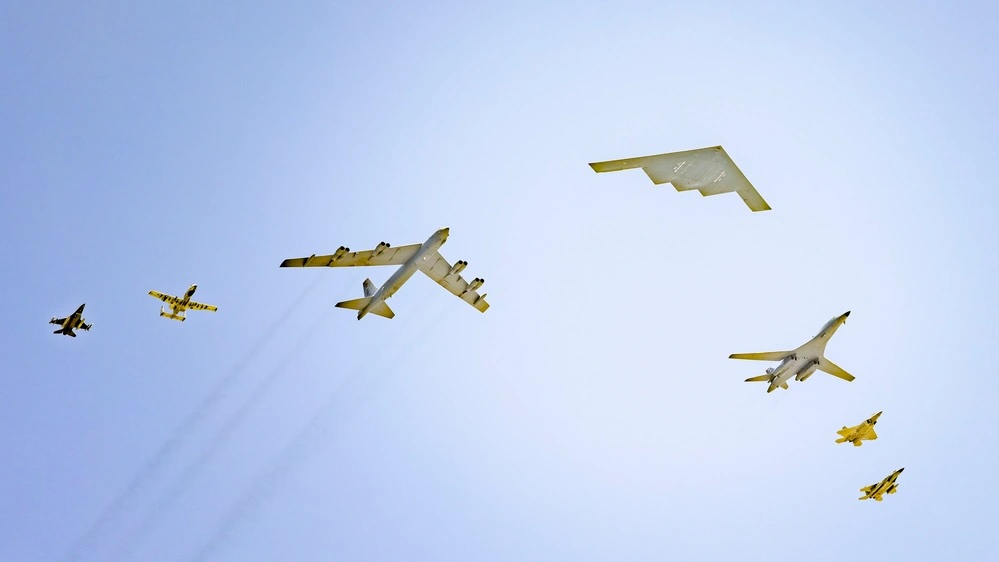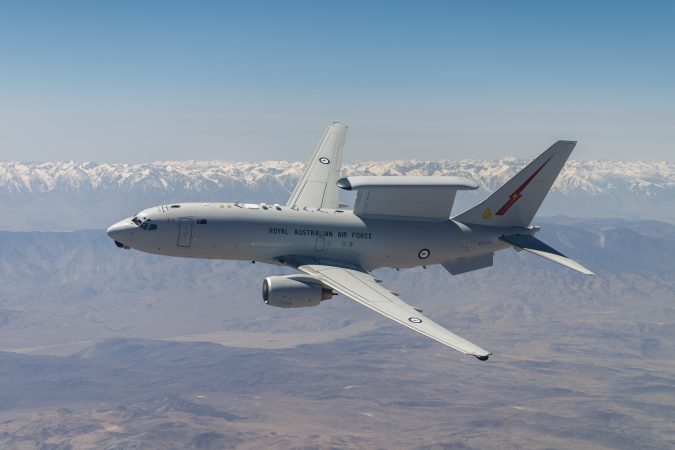The U.S. Air Force recently took a significant step in its push to integrate crewed fighters with semi-autonomous drones, the service’s research lab says.
Pilots of an Air Force F-16C and an F-15E each controlled two XQ-58A Valkyrie drones in an “air combat training scenario,” the Air Force Research Laboratory said in a July 3 release.
The test flight was carried out at Eglin Air Force Base, Fla., and demonstrated USAF’s ability to achieve “real-time integration between manned and semi-autonomous systems,” the release stated.
The XQ-58A, made by defense startup Kratos, first flew in 2019 and has been used to explore the “loyal wingman” concept in which drones can be controlled by crewed aircraft.
That approach was the forerunner of the service’s Collaborative Combat Aircraft. The Air Force’s first CCAs—the YFQ-42A and the YFQ-44A—are currently under development. The tests with the XQ-58A are being used to develop capabilities that will be incorporated in the CCA program, the Air Force indicated.
Indeed, while the Air Force is spending $711 million on the CCA program in fiscal 2025 and planning another $789 million in fiscal 2026, the service continues to invest in supporting efforts too. Its Autonomous Collaborative Platforms program “matures technology to reduce risk through development, integration, experimentation, and test activities,” and is funded at more than $50 million in fiscal 2025.
“With this flight, we mark a crucial step in developing capabilities that harness human-machine teaming to overcome complex threats and expand our advantages,” Brig. Gen. Jason E. Bartolomei, the commander of AFRL, said in a statement. “By developing and integrating autonomous platforms with manned systems, we can quickly adapt, increase combat effectiveness, and reduce risk to our aircrews in contested environments.”
Elon Musk and others in Silicon Valley have stirred up debate by insisting that autonomous drones should supplant crewed aircraft. The Air Force, however, is promoting a more evolutionary approach in which unmanned drones fly in tandem with crewed fighters and are controlled by the fighter pilot—what the service calls “human-machine teaming.”
AFRL did not elaborate in its statement on how the XQ-58A drones were controlled by the F-16C, a single-seat aircraft, and the F-15E, which carries a pilot and a weapons system officer. Nor did AFRL offer details on what maneuvers the aircraft conducted.
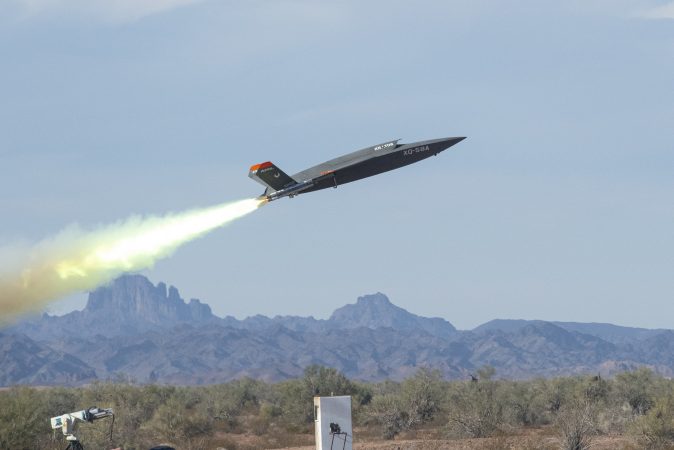
Representatives for AFRL did not immediately respond when asked for further details about the test. The test flights were carried out in conjunction with the Air Force Test Center, Air Combat Command, the Navy, and the Pentagon’s Rapid Defense Experimentation Reserve program. The XQ-58A is also operated by the U.S. Marine Corps.
Air Combat Command boss Gen. Ken Wilsbach said the test was part of the Air Force’s approach of using “operator-driven evaluations” to enhance human-machine teaming.
“Data from the recent flight demonstration will inform future development and deployment of semi-autonomous capabilities across the Department of Defense,” AFRL said in its release.
